In a fiercely competitive marketplace, multiple system cable operators (MSOs) are looking for new ways to differentiate their services and open new revenue streams. To do it, many are looking to expand branded broadband Wi-Fi throughout their coverage areas. But overlaying existing hybrid fiber coax (HFC) cable networks with new Wi-Fi services can be a complex and expensive proposition.
The Ruckus T811-CM outdoor access point is the industry's highest performing outdoor 802.11ac 4x4:4 Wave 2 Wi-Fi in a strand-mounted form factor designed to easily integrate with existing HFC networks. It features patented Ruckus BeamFlex+ adaptive antenna technology for RF optimization and interference mitigation to extend wireless range and reliability, combined with an integrated DOCSIS 3.1-backhaul. Available with an omnidirectional antenna, the T811-CM can provide consistent, reliable data access in a wide range of high-density client environments.
The T811-CM is a perfect choice for MSOs looking to deliver branded Wi-Fi connectivity for outdoor hotspot services in neighborhoods, resorts, train stations, and other public locations across their coverage areas. The form factor design affords easy installation and integration with HFC networks—using existing mounting, power, backhaul, customer service systems, and other existing cable assets. Network operators can easily create tiered wireless services at different quality levels, data offload solutions, and other new revenue-generating Wi-Fi services. And they can extend reliable managed wireless services outdoors to locations where Ethernet cabling is too expensive or impractical.
The T811-CM AP incorporates patented technologies found only in the Ruckus Wi-Fi portfolio.
- Extended coverage with patented BeamFlex+ utilizing multi-directional antenna patterns.
- Improve throughput with ChannelFly, which dynamically finds less congested Wi-Fi channels to use.
Additionally, using the T811-CM's integrated GPS, operators can automatically establish the exact location of each access point on a network map; greatly simplifying installation and maintenance.
Whether operators are deploying ten or ten thousand APs, the T811-CM is easy to manage through Ruckus SmartZone management services.
Benefits
GREAT OUTDOOR WI-FI
Experience high performance outdoor Wave 2 Wi-Fi with Industrial-grade IP-67 hardened enclosure (-40°C to +65°C) with GPS and DOCSIS 3.1 cable modem.
GREAT WI-FI PERFORMANCE
Provide a great user experience no matter how challenging the environment with BeamFlex+™ adaptive antenna technology using multiple directional antenna patterns. Additionally, with DOCSIS 3.1, the T811-CM delivers 1+Gbps over coax cable on the backhaul.
AUTOMATE OPTIMAL THROUGHPUT
ChannelFly™ dynamic channel technology uses machine learning to automatically find the least congested channels. You always get the highest throughput the band can support.
SERVE MORE DEVICES
Connect more devices simultaneously with two MU-MIMO spatial streams and concurrent dual-band 2.4/5GHz radios while enhancing non-Wave 2 device performance.
MULTIPLE MANAGEMENT OPTIONS
Manage the T811-CM from on-premises or remote physical/virtual appliances.
MORE THAN WI-FI
Support services beyond Wi-Fi with Ruckus IoT Suite, Cloudpath security and onboarding software, SPoT Wi-Fi locationing engine, and SCI network analytics.
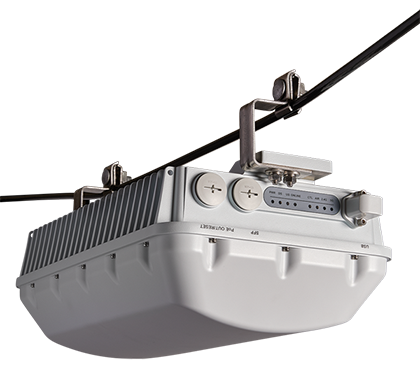
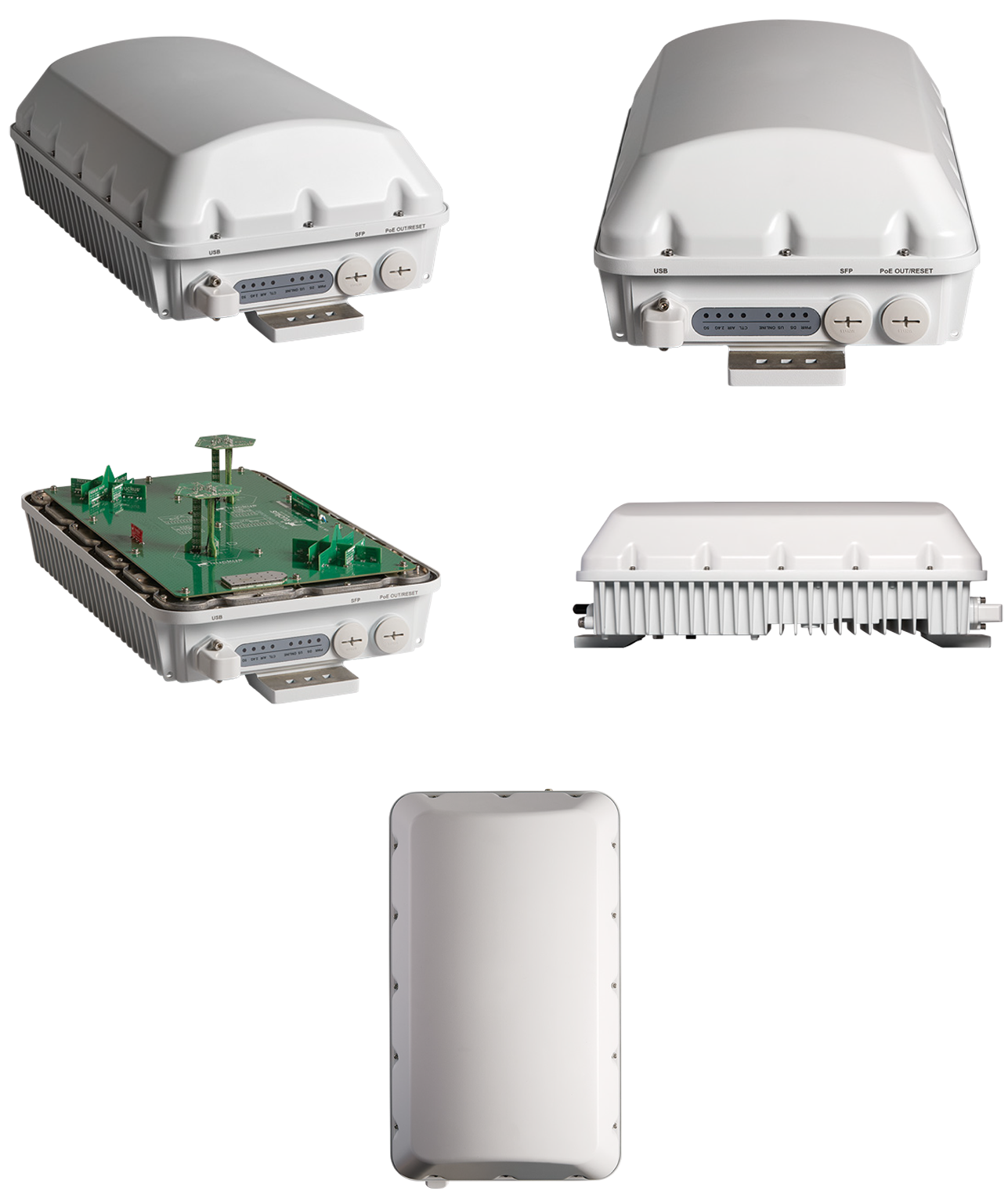
Access Point Antenna Pattern
Ruckus' BeamFlex+ adaptive antennas allow the T811-CM Series AP to dynamically choose among a host of antenna patterns (over 4,000 possible combinations) in real-time to establish the best possible connection with every device. This leads to:
- Better Wi-Fi coverage
- Reduced RF interference
Traditional omni-directional antennas, found in generic access points, oversaturate the environment by needlessly radiating RF signals in all directions. In contrast, the Ruckus BeamFlex+ adaptive antenna directs the radio signals per-device on a packet by-packet basis to optimize Wi-Fi coverage and capacity in real-time to support high device density environments. BeamFlex+ operates without the need for device feedback and hence can benefit even devices using legacy standards.
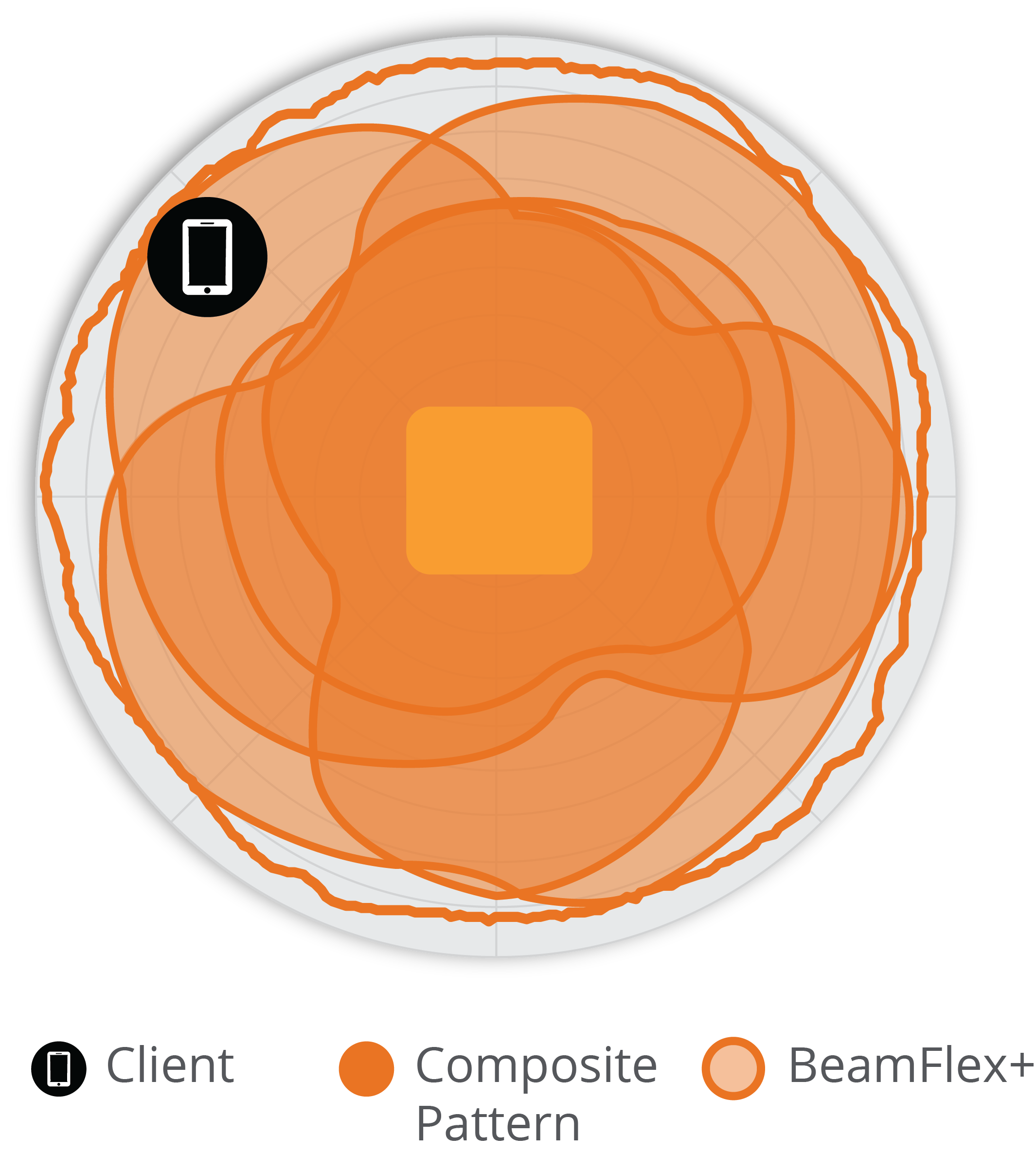
Antenna Patterns
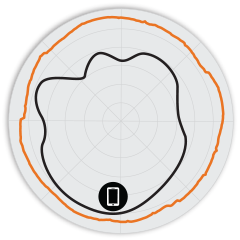
Antenna Patterns
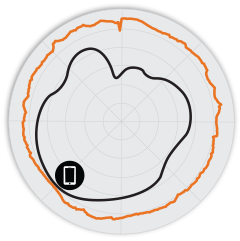
Antenna Patterns
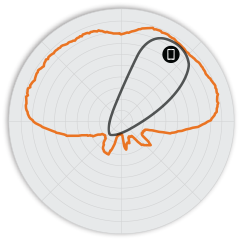
Antenna Patterns
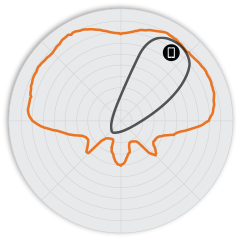
Note: The outer trace represents the composite RF footprint of all possible BeamFlex+ antenna patterns, while the inner trace represents one BeamFlex+ antenna pattern within the composite outer trace.
| Wi-Fi Standards |
|
| Supported Rates |
|
| Supported Channels |
|
| MIMO |
|
| Spatial Streams |
|
| Radio Chains and Streams |
|
| Channelization |
|
| Security |
|
| Other Wi-Fi Features |
|
| Antenna Type |
|
| Antenna Gain (max) |
|
| Peak Transmit Power (aggregate across MIMO chains) |
|
| Minimum Receive Sensitivity1 |
|
| Frequency Bands |
|
| HT20 | HT40 | ||
|---|---|---|---|
| MCS0 | MCS7 | MCS0 | MCS7 |
| -98 | -79 | -95 | -77 |
| VHT20 | VHT40 | VHT80 | |||
|---|---|---|---|---|---|
| MCS0 | MCS7 | MCS0 | MCS7 | MCS0 | MCS7 |
| -97 | -78 | -95 | -77 | -92 | -74 |
| Rate | Pout (dBm) |
|---|---|
| MCS0 HT20 | 22 |
| MCS7 HT20 | 18 |
| MCS0 HT40 | 17 |
| MCS7 HT40 | 16 |
| MCS8 VHT20 | 17 |
| MCS9 VHT40 | 16 |
| Rate | Pout (dBm) |
|---|---|
| MCS0 VHT20 | 25 |
| MCS0 VHT80 | 23 |
| MCS7 VHT40, VHT80 | 22 |
| MCS9 VHT40, VHT80 | 19 |
| Peak PHY Rates |
|
| Client Capacity |
|
| SSID per radio |
|
| Antenna Optimization |
|
| Wi-Fi Channel Management |
|
| Client Density Management |
|
| Queuing and Scheduling |
|
| Mobility |
|
| Diagnostic Tools |
|
| Controller Platform Support |
|
| Mesh |
|
| IP |
|
| VLAN |
|
| 802.1x |
|
| Tunnel |
|
| Policy Management Tools |
|
| IoT Capable |
|
| Ethernet |
|
| USB |
|
| Fiber |
|
| Cable Modem |
|
| Physical Size |
|
| Weight |
|
| Ingress Protection |
|
| Mounting |
|
| Operating Temperature |
|
| Operating Humidity |
|
| AC Input (over Coax) | 40V to 90V RMS 50/60Hz Quasi-Square Wave | |
| Operating Modes | Maximum Current Draw | Power Consumption |
| PoE Out Enabled |
|
|
| PoE Out Disabled |
|
|
| Wi-Fi Alliance3 |
|
| Standards Compliance4 |
|
| GPS |
|
| Location Based Services |
|
| Network Analytics |
|
| Security and Policy |
|
| T811 OUTDOOR APS | |
| 901-T811-US01 | T811-CM 802.11ac Wave 2 Outdoor Wireless Access Point, 4x4:4 Stream, Omnidirectional Beamflex+ coverage, 2.4GHz and 5GHz concurrent dual band, one 1GbE PoE+ port, IP-67 Outdoor enclosure. DOCSIS 3.1, supports Low+Mid Frequency Splits on both US and DS. Wi-Fi is band-locked for North America use. -40ºC to 65ºC Operating Temperature. For box contents, see Shipping Container Contents. |
| 901-T811-WW01 | T811-CM 802.11ac Wave 2 Outdoor Wireless Access Point, 4x4:4 Stream, Omnidirectional Beamflex+ coverage, 2.4GHz and 5GHz concurrent dual band, one 1GbE PoE+ port, IP-67 Outdoor enclosure. DOCSIS 3.1, supports Low+Mid Frequency Splits on both US and DS. Wi-Fi is NOT band-locked for World-Wide use. -40ºC to 65ºC Operating Temperature. For box contents, see Shipping Container Contents. |
Warranty: Sold with a limited one year warranty.
For details see: http://support.ruckuswireless.com/warranty
1Rx sensitivity varies by band, channel width and MCS rate.
2Max power varies by country setting, band, and MCS rate.
3For complete list of WFA certifications, please see Wi-Fi Alliance website.
4For current certification status, please see price list.
